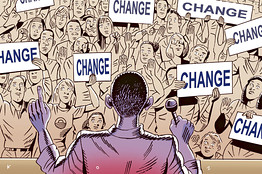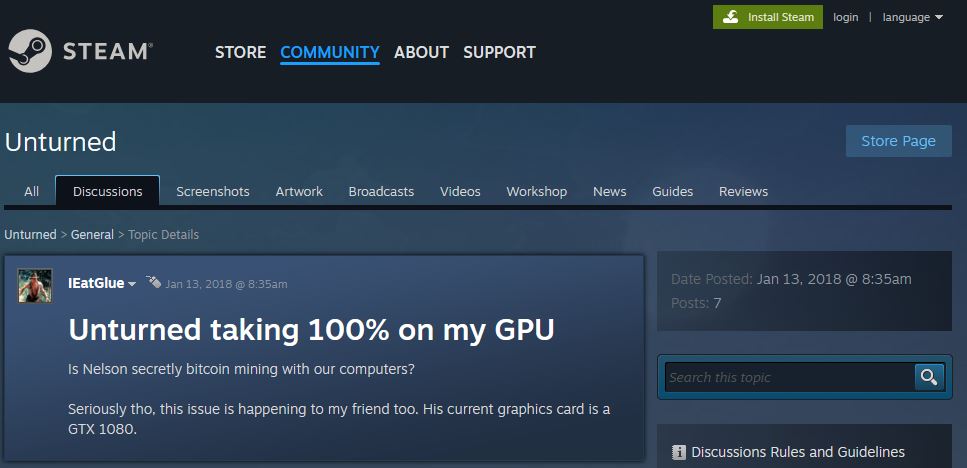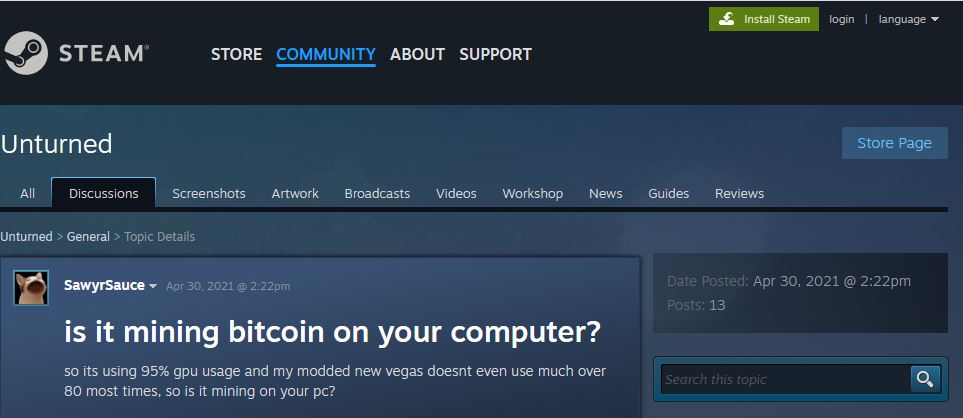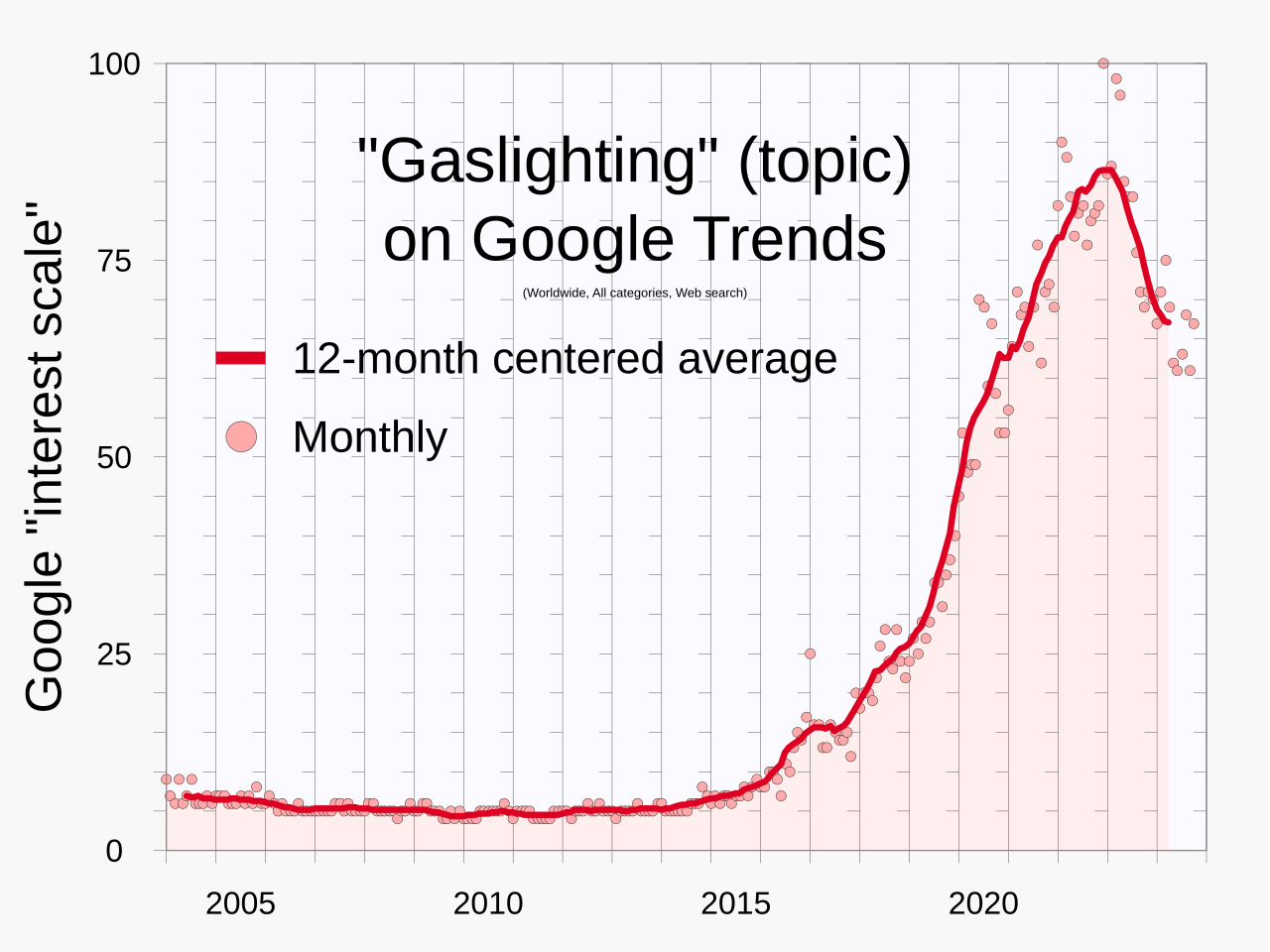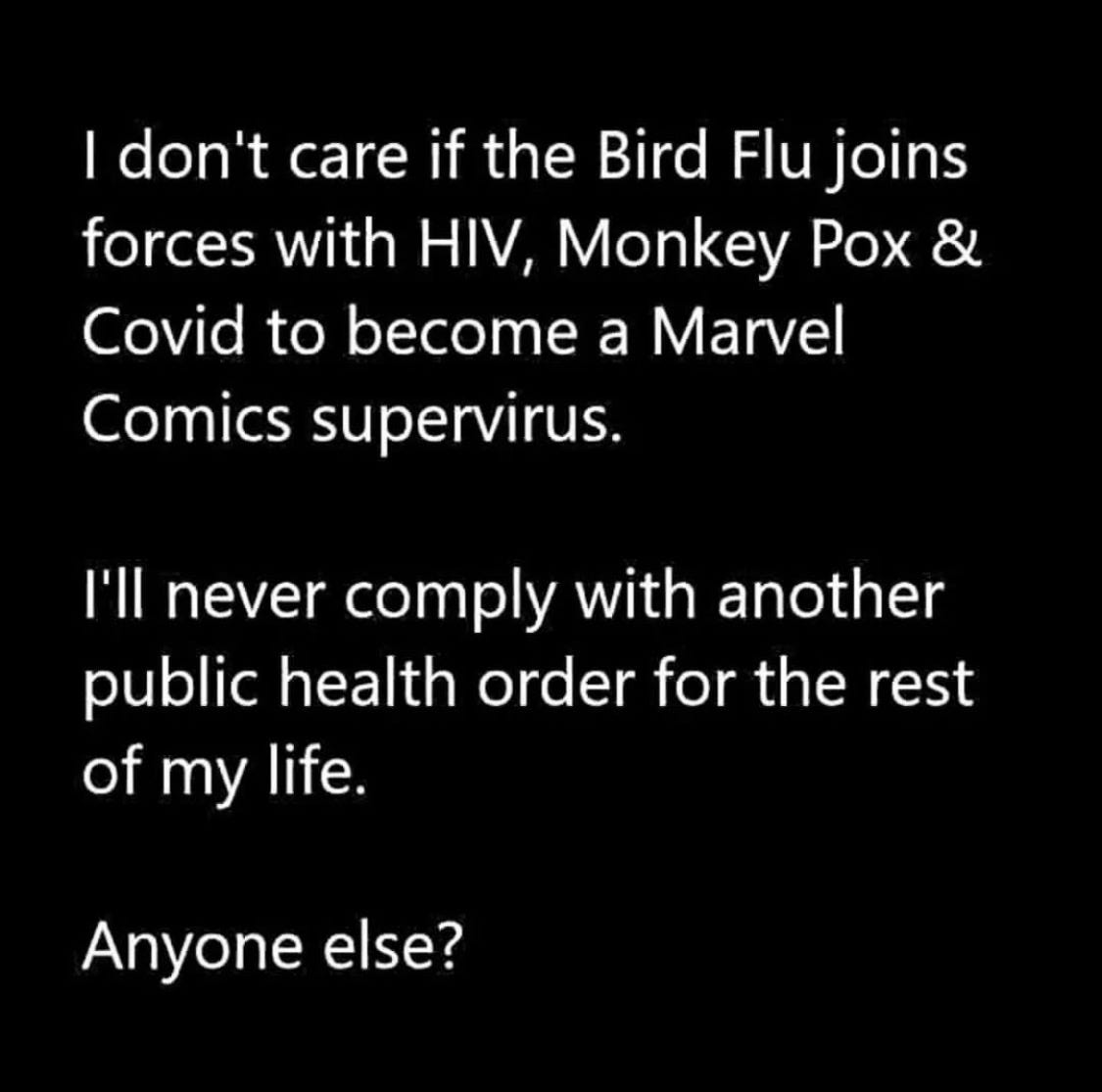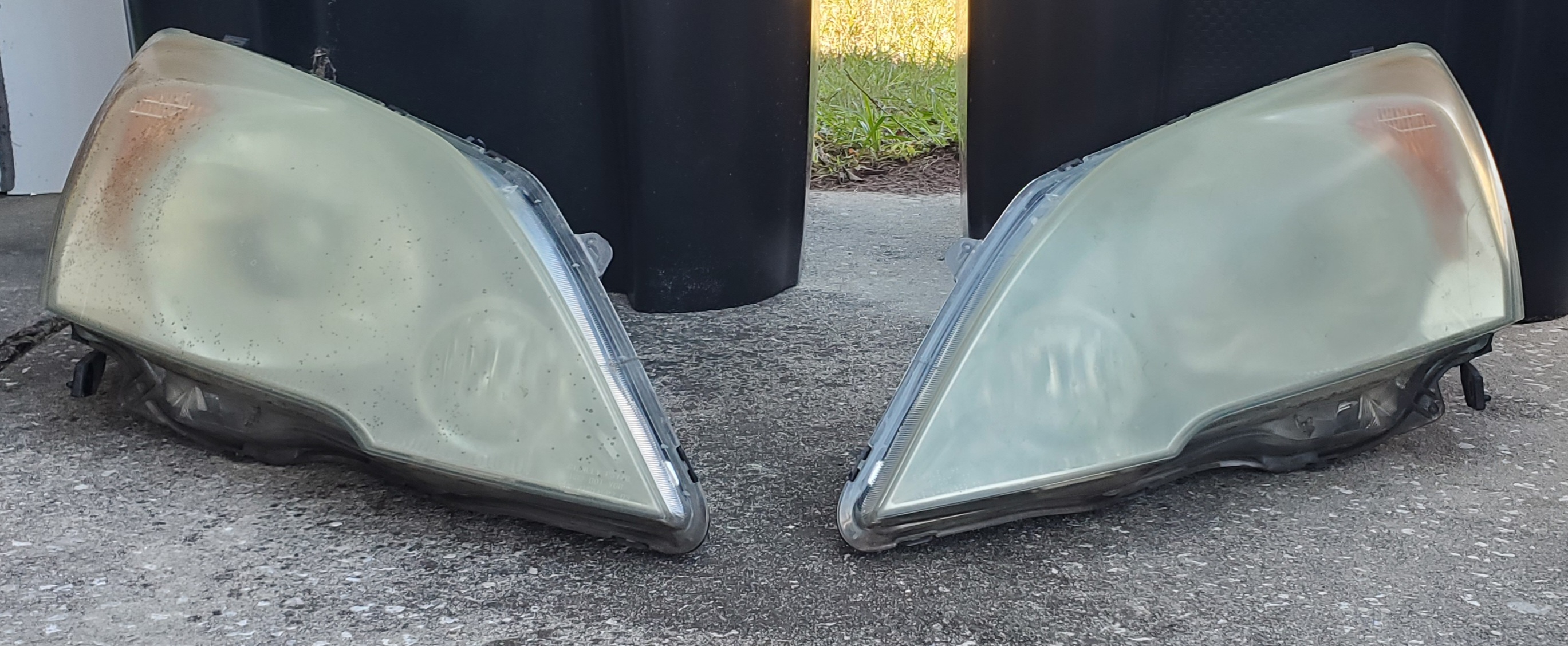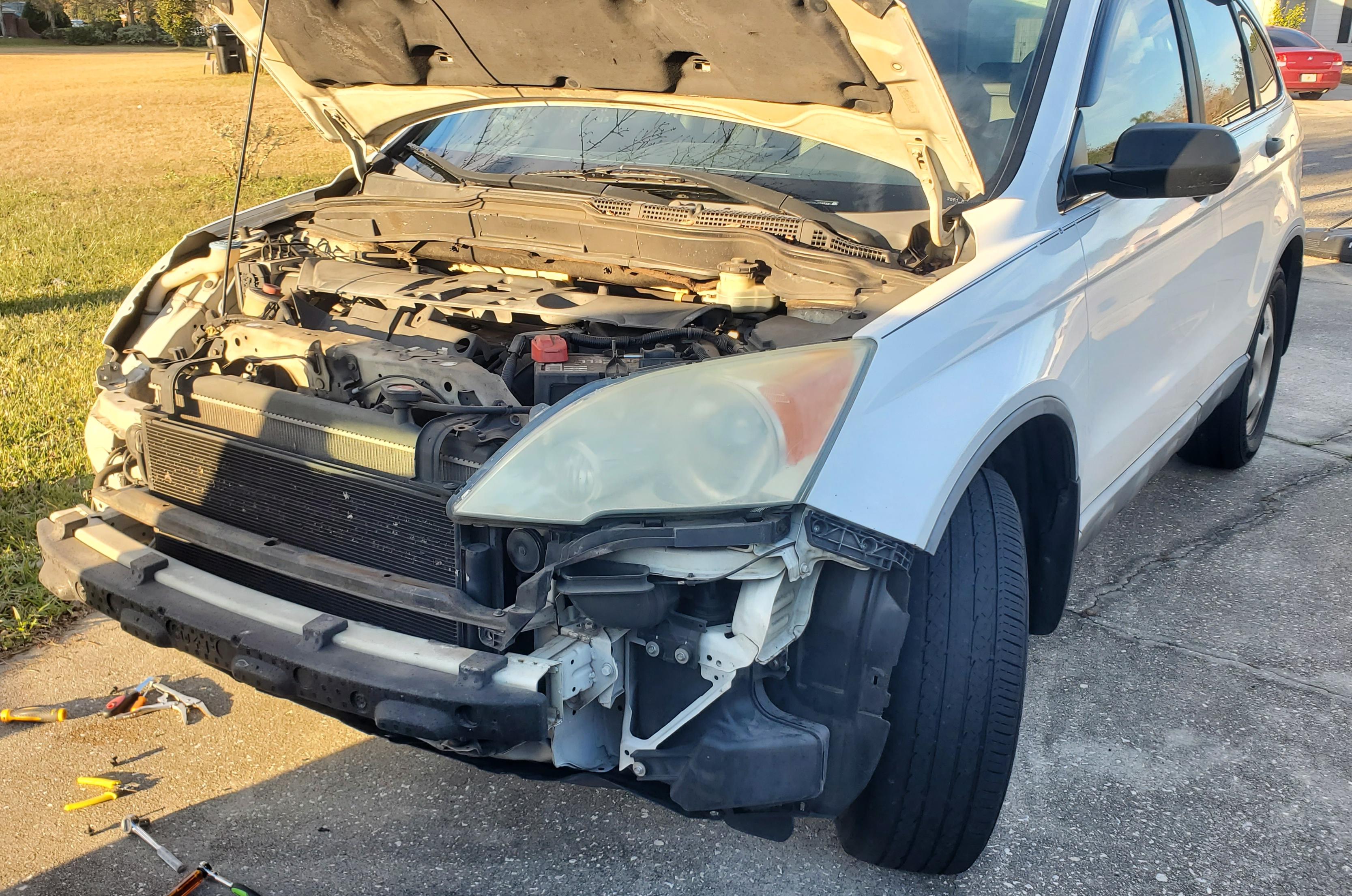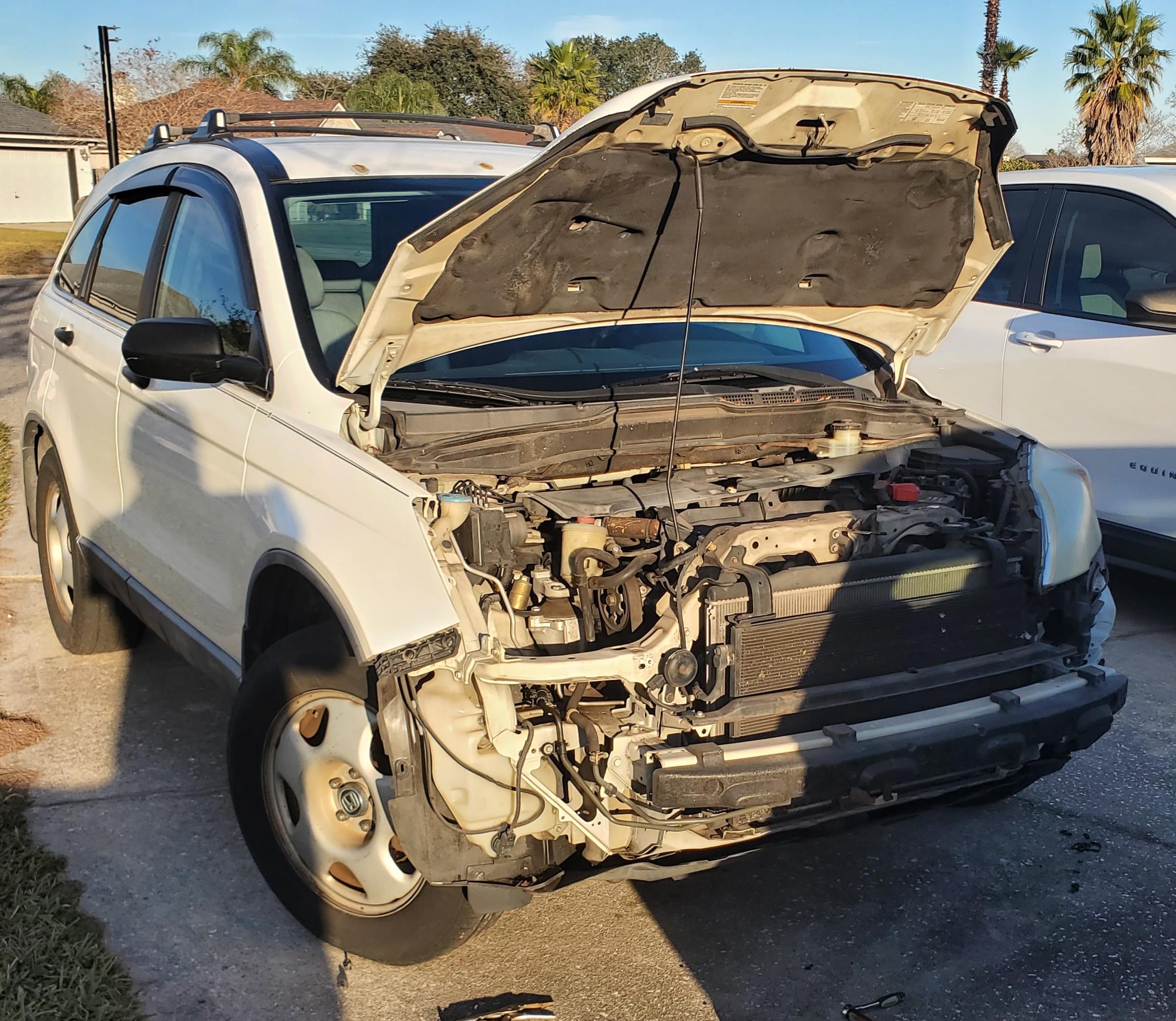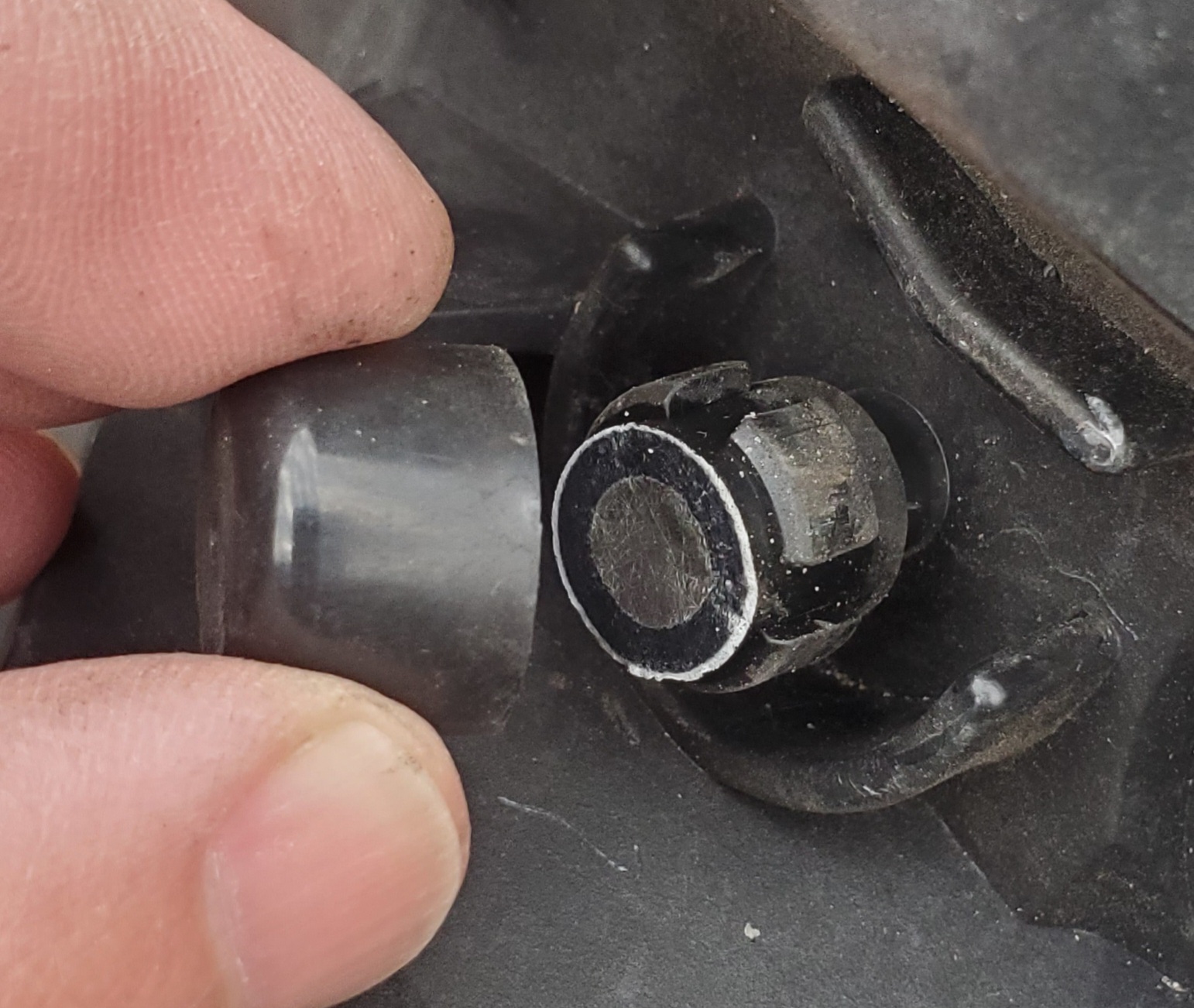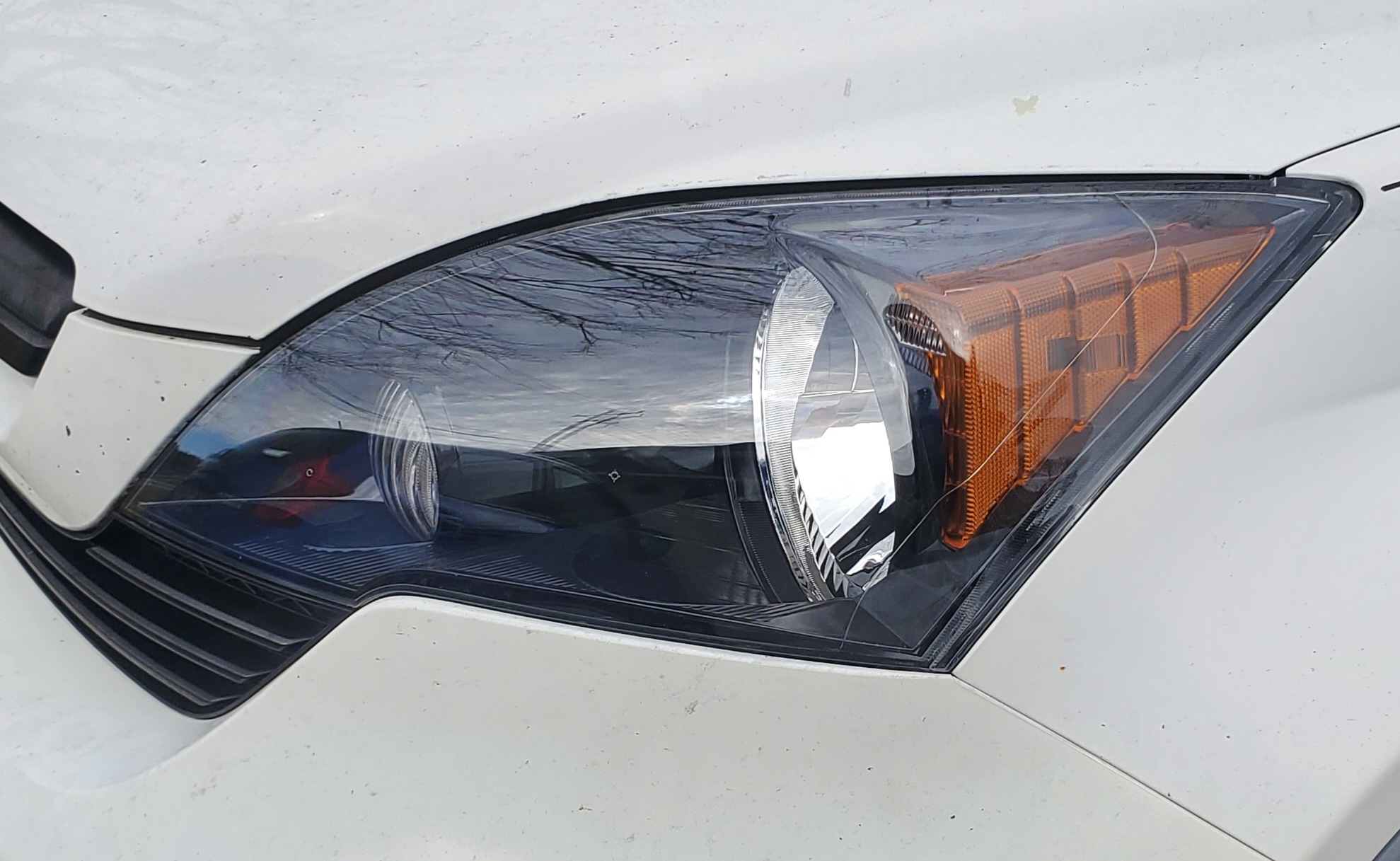The Magic of Crowds and Power
For this post, I’m going to quote an entire article. I don’t often do this, but this article is exquisite in it’s detail, and capturing of the emotion, and logic (or sometimes lack thereof) of the “Obama Movement.”
There is something odd -- and dare I say novel -- in American politics about the crowds that have been greeting Barack Obama on his campaign trail. Hitherto, crowds have not been a prominent feature of American politics. We associate them with the temper of Third World societies. We think of places like Argentina and Egypt and Iran, of multitudes brought together by their zeal for a Peron or a Nasser or a Khomeini. In these kinds of societies, the crowd comes forth to affirm its faith in a redeemer: a man who would set the world right.
As the late Nobel laureate Elias Canetti observes in his great book, "Crowds and Power" (first published in 1960), the crowd is based on an illusion of equality: Its quest is for that moment when "distinctions are thrown off and all become equal. It is for the sake of this blessed moment, when no one is greater or better than another, that people become a crowd." These crowds, in the tens of thousands, who have been turning out for the Democratic standard-bearer in St. Louis and Denver and Portland, are a measure of American distress.
On the face of it, there is nothing overwhelmingly stirring about Sen. Obama. There is a cerebral quality to him, and an air of detachment. He has eloquence, but within bounds. After nearly two years on the trail, the audience can pretty much anticipate and recite his lines. The political genius of the man is that he is a blank slate. The devotees can project onto him what they wish. The coalition that has propelled his quest -- African-Americans and affluent white liberals -- has no economic coherence. But for the moment, there is the illusion of a common undertaking -- Canetti's feeling of equality within the crowd. The day after, the crowd will of course discover its own fissures. The affluent will have to pay for the programs promised the poor. The redistribution agenda that runs through Mr. Obama's vision is anathema to the Silicon Valley entrepreneurs and the hedge-fund managers now smitten with him. Their ethos is one of competition and the justice of the rewards that come with risk and effort. All this is shelved, as the devotees sustain the candidacy of a man whose public career has been a steady advocacy of reining in the market and organizing those who believe in entitlement and redistribution.
A creature of universities and churches and nonprofit institutions, the Illinois senator, with the blessing and acquiescence of his upscale supporters, has glided past these hard distinctions. On the face of it, it must be surmised that his affluent devotees are ready to foot the bill for the new order, or are convinced that after victory the old ways will endure, and that Mr. Obama will govern from the center. Ambiguity has been a powerful weapon of this gifted candidate: He has been different things to different people, and he was under no obligation to tell this coalition of a thousand discontents, and a thousand visions, the details of his political programs: redistribution for the poor, postracial absolution and "modernity" for the upper end of the scale.
It was no accident that the white working class was the last segment of the population to sign up for the Obama journey. Their hesitancy was not about race. They were men and women of practicality; they distrusted oratory, they could see through the falseness of the solidarity offered by this campaign. They did not have much, but believed in the legitimacy of what little they had acquired. They valued work and its rewards. They knew and heard of staggering wealth made by the Masters of the Universe, but held onto their faith in the outcomes that economic life decreed. The economic hurricane that struck America some weeks ago shook them to the core. They now seek protection, the shelter of the state, and the promise of social repair. The bonuses of the wizards who ran the great corporate entities had not bothered them. It was the spectacle of the work of the wizards melting before our eyes that unsettled them.
Daniel Patrick Moynihan, the late Democratic senator from New York, once set the difference between American capitalism and the older European version by observing that America was the party of liberty, whereas Europe was the party of equality. Just in the nick of time for the Obama candidacy, the American faith in liberty began to crack. The preachers of America's decline in the global pecking order had added to the panic. Our best days were behind us, the declinists prophesied. The sun was setting on our imperium, and rising in other lands.
A younger man, "cool" and collected, carrying within his own biography the strands of the world beyond America's shores, was put forth as a herald of the change upon us. The crowd would risk the experiment. There was grudge and a desire for retribution in the crowd to begin with. Akin to the passions that have shaped and driven highly polarized societies, this election has at its core a desire to settle the unfinished account of the presidential election eight years ago. George W. Bush's presidency remained, for his countless critics and detractors, a tale of usurpation. He had gotten what was not his due; more galling still, he had been bold and unabashed, and taken his time at the helm as an opportunity to assert an ambitious doctrine of American power abroad. He had waged a war of choice in Iraq.
This election is the rematch that John Kerry had not delivered on. In the fashion of the crowd that seeks and sees the justice of retribution, Mr. Obama's supporters have been willing to overlook his means. So a candidate pledged to good government and to ending the role of money in our political life opts out of public financing of presidential campaigns. What of it? The end justifies the means.
Save in times of national peril, Americans have been sober, really minimalist, in what they expected out of national elections, out of politics itself. The outcomes that mattered were decided in the push and pull of daily life, by the inventors and the entrepreneurs, and the captains of industry and finance. To be sure, there was a measure of willfulness in this national vision, for politics and wars guided the destiny of this republic. But that American sobriety and skepticism about politics -- and leaders -- set this republic apart from political cultures that saw redemption lurking around every corner.
My boyhood, and the Arab political culture I have been chronicling for well over three decades, are anchored in the Arab world. And the tragedy of Arab political culture has been the unending expectation of the crowd -- the street, we call it -- in the redeemer who will put an end to the decline, who will restore faded splendor and greatness. When I came into my own, in the late 1950s and '60s, those hopes were invested in the Egyptian Gamal Abdul Nasser. He faltered, and broke the hearts of generations of Arabs. But the faith in the Awaited One lives on, and it would forever circle the Arab world looking for the next redeemer.
America is a different land, for me exceptional in all the ways that matter. In recent days, those vast Obama crowds, though, have recalled for me the politics of charisma that wrecked Arab and Muslim societies. A leader does not have to say much, or be much. The crowd is left to its most powerful possession -- its imagination.
From Elias Canetti again: "But the crowd, as such, disintegrates. It has a presentiment of this and fears it. . . . Only the growth of the crowd prevents those who belong to it from creeping back under their private burdens."
The morning after the election, the disappointment will begin to settle upon the Obama crowd. Defeat -- by now unthinkable to the devotees -- will bring heartbreak. Victory will steadily deliver the sobering verdict that our troubles won't be solved by a leader's magic.
This way of thinking applies as much to Obama, as it does to Trump now.
People are looking for a savior – and they shouldn’t be. No politician is going to save anyone. That’s a very dangerous belief. It’s not a wise position to put oneself in.
Don’t project yourself onto other people, and imagine that their wishes are your wishes. It’s not realistic, and will nearly always lead to disappointment.
Do I think that Trump is going to do some good things (as it relates to the American citizens) yes. But I also think he’s going to put in place some measures that might prove very damaging in the future. Precedence is a dangerous thing. Sure it might be (set / used) to remove damaging policy right now, but it might also be used to instate damaging policy at a later time.
We’re witnessing a perfect storm of illegitimacy. None of the branches of government are actively doing what they are supposed to do.
The SCOTUS is ruling in ways that do not truly uphold The Constitution. (Obamacare / the ACA) was rewritten by Chief Justice Roberts – to make it legal. Why? It was bad law, everyone knew this. Anyone who looked at the mechanics of it knew that it was not Constitutional (Roberts proved this by rewriting parts of the legislation).
Repealing the ACA never happened. This was not by accident either. Why is Obamacare still law?
Why have most people stopped talking about it?
Why did Trump praise the COVID-19 vaccines during Biden’s State of The Union Address in 2024?
How is it that the war in Ukraine is the least-televised and least-broadcast in history? I remember watching the Gulf War on cable TV each night in the 1990s. They even made fun of it in movies at the time.
Video game footage was said to be real — and this was echoed by the Ukrainian Military.
CLAIM: Video shows the Ukrainian air force shooting down a Russian air force fighter jet in Kyiv.
AP’S ASSESSMENT: False. The footage is from the video game Digital Combat Simulator, according to the YouTube user who uploaded the clip on Feb. 24.
THE FACTS: Social media users on Thursday misrepresented footage from a video game showing close combat between two fighter jets, claiming the clip showed the Ukrainian air force shooting down a Russian fighter.
“Footage of a MiG-29 of the Ukrainian Air Force shooting down a Su-35 fighter jet of#Russia’s Air Force over Ukraine’s capital#Kyiv today,” reads one false tweet.
The Ministry of Defense of Ukraine’s official Twitter account also shared the clip with the false caption.
Now we have Starlink, 24/7 Internet, phones with cameras built-in, and yet there's very little known about what has really happened in Ukraine – outside of "officially approved” channels. Why is that? There was more known about Vietnam. But this modern war, not much of anything. Where are all the independent journalists? Where’s Geraldo Rivera to draw military movements in the sand? Doesn’t it all seem a little odd?
Things are not what they seem – know this.
What are the answers to all this? I don’t know. I just know that we’re being led down the primrose path from every angle.
Don’t succumb to this belief that everything is going to be OK. It’s likely not. Does that mean it’s the end. Of course not. Things always ebb and flow.
We (free thinking people) haven’t “won.” Things are just changing again. Navigating all of this will be insanely complicated, but simple things still work.
We’re now in a time of competing manipulations, or manipulative abilities. It’s a war of manipulation, because the people who truly want control know that they can’t do it without willing participants. Ever wonder how so few rule so many?
Convincing people doesn’t work fast enough. There’s history involved, it gets complicated, so people have to be corralled much more quickly now. Don’t give people time to think – force them into reaction.
Just as the Internet freed people, and allowed for the free flow of knowledge – knowledge that overcame the previous manipulation(s) – now the Internet is being used to limit knowledge – to further manipulations.
It’s not a new concept, it’s an old concept, it just has more reach, and can manipulate people on a mass scale – much more quickly than at any other point in time. Don’t let politicians (on either side) convince you that they believe in your ideas – because they don’t. The only people who might are people on the street – and they’re not likely to come to power anytime soon.
If I had any advice to give it would be this. Enjoy the good things, but notice the bad things (and most importantly how they came about). Don’t become stuck. Keep your eyes open – don’t become caught up in nonsense – because nonsense is going to come from all sides now, and it’s going to come fast and hard.
Don’t fall prey. Go outside and talk with your neighbors. Talk with the people at the grocery store.
What do you think?
Please leave a comment, like it or hate it... You DO NOT need to register to leave a comment. Email addresses are NOT used. Just make one up "someone@somehost.com"
Is The New Waste Collection Service Trash?
Where I live there is a new waste collection company. They require garbage to be picked up in bins like these.
They each hold 95 gallons. Of course, that’s if all of your garbage was liquid -- which it will never be.
We are a family of four, and I could only swing a single can if I took the other larger stuff that we throw away, and compress it, by drawing all the air out of the bag with a vacuum cleaner.
I have broken down boxes and larger stuff in 55 gallon bags from Sam’s Club. I was able to put them at the curb, filled with light stuff, and the other company would just toss them in the truck no questions asked. But we can't do that anymore.
Fitting all of that in one 95 gallon can was not working. I decided to spring for the extra can. It is $65 dollars a year to lease it, and $15 a quarter for collection.
Bottom line, it’s a pain in the neck. This change costs the taxpayer more money in the end, it’s just not collected in taxes -- it’s collected through the waste removal company. But I’m sure it looked good on paper. It saves the county money, just not the residents.
Anyway, because these garbage carts don’t close with any kind of seal, they can get quite nasty before the weekly pickup day, flies and whatnot.
I’ve seen many options to keep this from happening. One of the most interesting was taking a feminine napkin (maxi-pad) soaking it with Pine-Sol, and sticking it to the under part of the lid. While I’m sure this works, it seems like a real pain, because the pads will need replacing frequently. Also the cans that we have are black, and this is Florida, so they’re going to be extremely hot most of the time.
Another interesting option was this.
This was a great option, because it doesn’t require too much work. However, you’ll have to remove the laundry bag before collection. Because of the way the truck picks up the can, you’re likely to lose your laundry bag and bungee cord.
So, I came up with my own method, stainless steel screen. I know that most people don’t have this laying around -- but I do. I originally bought it to make sand sifters for shark’s teeth at the beach. They came in a pack of four 11” x 14” pieces. So, I had plenty left over to use for other stuff.
After looking at the can, there is only one place where flies can get in (with the lid closed). There are two vents at the back of the can. So, I decided to make screens to cover those openings.
I secured them with "stingers" those little framing screws that are super sharp. That's why they call them stingers, because when you reach into the bag they sting you!
This appeared to be a great solution. No pieces to replace, easy to make and install, problem solved right?
Well, not so simple it seems, I didn’t realize that the curved part was literally where the screens would sit down.
The screens needed to be modified. So I came up with this shape. I already installed them but they are shaped like this.
Here's what the openings look like now with the modified screens installed.
No flies are getting in now!
I now have a solution that doesn't require babysitting.
What do you think?
Please leave a comment, like it or hate it... You DO NOT need to register to leave a comment. Email addresses are NOT used. Just make one up "someone@somehost.com"
Conspiracy Theorist’s Advocate (4) Artificial Intelligence is It Just A Scam? Let’s Do Some DeepSeek(ing)
The reason I ask this is simple. The Chinese have developed an AI engine that is supposedly 10-times more efficient than its US counterparts. But is that really true? I can’t be sure, I have never seen the system in person. But look at the date of the DeepSeek-R1 was released to the public.
DeepSeek's success has already been noticed in China's top political circles. On January 20, the day DeepSeek-R1 was released to the public, founder Liang attended a closed-door symposium for businessman and experts hosted by Chinese premier Li Qiang, according to state news agency Xinhua.
Liang's presence at the gathering is potentially a sign that DeepSeek's success could be important to Beijing's policy goal of overcoming Washington's export controls and achieving self-sufficiency in strategic industries like AI.
However, I do know this. I ran a Meta Llama AI model at home on an older machine I had laying around. It was an i5-2500K with 16Gb of RAM. I slapped in an SSD, installed Ubuntu Server, and ran the AI model. Was it slow? Oh... yes! It took about 15 minutes to formulate a simple answer to the prompt, “How are you doing today?”
What did I learn from this? First, I learned that none of the models that you are able to run (for free) that I could find were capable of going out to the Internet to gather data and bring it back. They could only formulate answers based on the data set they already had. That data is downloaded when you started it up. So, you couldn’t ask it about anything that just happened. That’s not to say that you can’t do that with Micro$oft’s commercial AI model, or the commercial version of OpenAI. I’ll have to cover that in another post.
Second, I learned that what I was running was seriously slow. But it wasn’t slow to the extent that I would need billions of dollars to build a data center of my own to make it fast enough to be useful. I could have spent around $1,000 dollars and put together a purpose-built machine that would have made it fast enough for me to use it, at least one-on-one.
Now if I put it on the Internet it would get many more hits, and become bogged down quickly, but that’s not an issue for development, and development is where all the money is being funneled to in the AI space.
Where am I going with all this? I still believe that there’s some hidden angle to AI. There a hidden element of fraud lurking just beneath the surface. I have a few theories on this. The first of which is this:
AI is likely just a new gatekeeper tool. Who controls the AI? Who programs it and teaches it? More importantly, who keeps info from it?
AI is going to do precisely what the people in charge want it to do, otherwise they wouldn't start putting it out there, and have people running around to hype it.
If it mattered in the ways many are describing -- they would never allow access to the masses. And in the form the masses will be allowed to access it -- it will be strategically manipulated.
The Internet was hyped in precisely the same way that AI is being hyped now. “All the information you could possibly need. You won't need a lawyer -- because you can look up case law.” “All of the world’s information right at your fingertips.”
But what did we get in reality? A censored and lame version of what was initially “sold” and hyped.
AI will likely be no different. AI will be the new “expert” in the room, or in all rooms.
Only, AI is not an expert, and those who program it will make sure that it does a much better job of censoring truth and hiding the misdeeds of those in power.
People are to trust AI to the extent that it becomes rather unquestionable. After all AI is like a digital Dr. Strange, it’s already run all the simulations -- and this is the only path in which we win and save humanity. Oh, and it says you’ll own nothing, be a slave, and live in a 15-minute city. 🤣😂
Sure, AI will take the jobs of people in call centers, because in reality they were just another kind of gatekeeper. You're not supposed to get to get ahold of a real person -- because they might actually be able to help you. However, it’s likely that you agreed to this kind of “non-service” in the contract you effectively signed when you agreed to pay for the service right?
There was a game my kids would play called Unturned. It would peg out the GPU on any machine that you ran it on. It didn’t matter if it was a brand new $4,000 video card, it would peg it out and the game had super cheesy graphics. I was joking with my kids, I said, “I bet Unturned is really a backdoor for Bitcoin mining. You play this lame game with cheesy graphics, meanwhile you’re really paying the power bill for someone to mine Bitcoin on your hardware!” Of course, I was joking, but others were wondering the same thing! I even looked it up once, this is what I found:
And this post.
However, this got me thinking about AI and Big Tech -- and the billions of dollars they’re promised by the US Government under the Trump administration.
Here are a few spitball ideas that could make the AI industry completely implode (more than it has in the last few hours of 01-28-25).
The Chinese AI engine is on the Internet, and is really just a crafty API for OpenAI, or the Microsoft AI? After all, they say it’s “on par” with OpenAI and Microsoft AI -- what if it is OpenAI and Microsoft AI on the back-end?!
=== UPDATE 01/29/25 === My prediction might not be too far off. See here.
Microsoft, a close partner of OpenAI, is reportedly also investigating the issue after its researchers noticed individuals potentially linked to DeepSeek extracting large amounts of data from the AI firm’s application programming interface [API] last fall, according to Bloomberg.
White House AI and crypto czar David Sacks claimed Tuesday that there is “substantial evidence” that DeepSeek used distillation to pull information from OpenAI’s models.
“I don’t think OpenAI is very happy about this,” he told Fox News. “I think one of the things you’re going to see over the next few months is our leading AI companies taking steps to try and prevent distillation.”
- The Big Tech firms are using most of the investment money to mine Bitcoin, and they run the AI on a fraction of the total computer power being consumed by their AI ventures. They’ll walk away multi billionaires without anyone really being able to prove that they did it. After all, fleecing the US taxpayer is a form of art in the Big Tech space. Results don’t matter so much.
- The Chinese just exposed the American AI industry’s scam -- effectively pulling [investment] money from the US AI industry (by illustrating the excessive amount of computing power “required” by US tech firms). The Chinese are actually working on real AI -- not just some elaborate scam.
- The US Government (taxpayer money) steps in and backs US Big Tech firms in the AI space, allowing them to keep the scam running -- only now with government funds.
When the Chinese government funds an effort, who benefits? The Chinese government, right? Not the Chinese people (as a whole).
When the US Government funds and effort, who benefits? The US Government will own the AI space -- because they’re backing the development. Does that sound like a good idea to you?
Is any of this real? Who knows, but at this point it nothing would surprise me.
What do you think?
Please leave a comment, like it or hate it... You DO NOT need to register to leave a comment. Email addresses are NOT used. Just make one up "someone@somehost.com"
Y2K The Original Gaslighting
And so It Begins
Anyone old enough to remember “The Y2K Crisis” understands how silly and overblown the whole thing was. Well, at least we all do now. But at the time there were many people who were seriously worried that there would be apocalyptic ramifications -- because of a two-digit year limitation in date codes.
Many computer systems measure time and date using Unix time, an international standard for digital timekeeping. Unix time is defined as the number of seconds elapsed since 00:00:00 UTC on 1 January 1970 (an arbitrarily chosen time based on the creation of the first Unix system), which has been dubbed the Unix epoch.[6]
This was not really much of an issue, because it could be easily remedied in software. Some older devices that ran strictly firmware, could have an issue, VCRs and some older employee time card systems. Very old mainframe systems did have some issues, but these were limitations that were known about for a very long time. The date limitation didn’t come about all of a sudden. Anyone familiar with computer programming already knew about these limitations.
There were always weird limitations caused by addressable memory areas, and number precision. There time zone limitations with FoxPro databases, if you exceeded 99 time zones the database would start, then immediately crash. I actually ran into that issue in 2007 when Micro$oft released an update to change the Daylight Savings Time for March 11, 2007. They came out with an all-encompassing update, covering all time zones around the world. The update added a massive amount of time zones to the system. I applied the MS Daylight Savings Time update to a Windows XP system that was used for a Northern Computers/Honeywell card access system. It caused the FoxPro database to crash. I was able to get it working again by going into the Windows registry and deleting additional time zones that were added as a result of the update.
Again, these were not new things.
But the governments of the world had to take action!
There was a bill passed n 1998, the YEAR 2000 INFORMATION AND READINESS DISCLOSURE ACT. Followed in 1999 by H.R.775 - Y2K Act. Of course there was other legislation in many countries relating to the Y2K scare and even a UN Year 2000 Team.
The governments of the world were taking this very seriously and you should too. Be afraid!
Gaslighting
In 1999 the term “gaslighting” wasn’t as popular as it is today. The term gaslighting didn’t really take off until around 2015.
Here is a definition: https://health.clevelandclinic.org/gaslighting
Gaslighting is a very specific form of emotional abuse and mental manipulation that disrupts your ability to trust others and yourself. While the term has gained popularity online, in reality TV and other pop culture avenues, it’s also a term that’s often over-used to describe other kinds of bad behaviors, like lying, guilt-tripping or shaming.
Basically it’s lying to people to make them do what you want them to do, or at the very least, make their actions more predictable. But this was all done for your safety...
Nobody was more guilty of gaslighting than the media. Sure politicians were in on it as well, but they were sparse, not nearly as coordinated as the media. Most newspapers (which people still read at the time) and TV broadcast news ran stories about how scared people were.
It was interesting, because if you watched a whole Y2K news segment, or read an entire Y2K article -- towards the end -- they would always downplay the seriousness of Y2K. However, they know that most people aren’t going to watch the whole segment, or read the entire article. Thus they were gaslighting.
The stories would have headlines like, “People are Scared for Their Future” or “Many Believe That Y2K Could Lead to A World Crisis.” They were continually pushing people’s fears -- not what the likely outcome would be. Not only that, they were pushing the fears to the very people who were the least informed on the issue, people outside of the IT world. They didn’t interview programmers, no they interviewed random people on the street. Because those random people are the best “sources” for accurate information right? Man on the street interviews are good when you want “REO Speedwagon” style information, someone heard something from someone, who heard it from a friend.
Basically all stories that revolved around a very serious “crisis.” Sure you can party like it’s 1999, but at midnight right after the ball drops -- shit’s going to get real, and you might just be wading around in the dark, because the power will probably go out too -- not just where you are but everywhere.
I was an auto mechanic at the time, and there were many people worried that their cars might not start. I asked them, “Have you ever had to set the date in your car?” to which they would reply, “No...” It was obvious that it made no difference for anything that kept time based on 12/24 hour time only. It would only effect (some) devices that had a “date/year” associated with their time keeping ability. Ever wonder why most car radios don’t show AM and PM? It’s because you’re going to drive the car -- you’ll be outside in the car -- you’ll know if it’s day or night.
When the whole thing when down without even so much as a fizzle. Nobody called out the media on their nonsense. Of course they had all the articles out there claiming that it was going to be no big deal -- but that was two-thirds of the way through articles -- with a misleading headlines.
The Y2K scare created a global panic, but as midnight came and went on January 1, 2000, no computer glitches were reported. Cynics attributed the hysteria about the bug to computing companies cashing in on a nonexistent problem. In an age uncomfortable with its reliance on technology, the end of the millennium was bound to create superstitious fears. Whether the Y2K problem was solved in the nick of time, or was not really there at all, will probably never be known for sure.
20-Years On, We Get COVID-19
That is why it seems to me that the Y2K Scare was the “dry run” leading up to the COVID-19 Scare. Scaring people into a manipulable position was what Y2K was all about. Crisis management -- when there’s no real crisis. There were no officials that really believed that bad things were going to happen. It was all a ploy. The response is what it was always about. Where would we be if the government didn’t swoop in and save us from the impending crisis that was joked about decades before hand by most programmers?
Fast forward to 2019, 20-years later, and what happened? We had the "COVID-19 Scare." Video of people falling over while walking down the street in China (this was played over and over on cable news stations). “Don’t wear a mask -- no you’d better wear one!” – Anthony Fauci
“We’re in the middle of a pandemic and everyone should quake in their boots. The invisible enemy is coming for you!”
Meanwhile, people are told that they might experience flu-like symptoms, and should stay home and self isolate. Drink Gatorade and eat Saltine crackers. All of this while simultaneously claiming that the pandemic will take countless lives.
This went on for more than a year, then “officials” started walking things back a little. Until eventually COVID was nothing more than a seasonal bug.
COVID-19 was always about the response and never about the virus.
The proof of this is how nobody seems worried about COVID anymore. Of course this is explained away as “Viruses become less virulent over time.” Really? Then why push the Flu vaccine like a crack dealer on a street corner? Why force hospital workers to get the Flu vaccine, or face layoffs? All this -- before the COVID Scare?
The Flu has been around for a long time. Shouldn’t it be less virulent by now -- kind of like how COVID is now? After all, it was the world’s most deadly virus just a few years ago?
Now they're coming on with the Bird Flu nonsense. Just in time for another Trump presidency. How convenient.
What do you think?
Please leave a comment, like it or hate it... You DO NOT need to register to leave a comment. Email addresses are NOT used. Just make one up "someone@somehost.com"
Honda CR-V Headlight Replacement with Aftermarket Headlights
We all see cars on the road with fogged and crappy looking headlights right? But headlights are insanely expensive (at least from the dealer they are). And so, many people just drive around with their high beams in an attempt to have light cut through the milk carton like somewhat opaque plastic covering their headlight bulbs.
This is what mine looked like.
My car is a 2008, so I figured it was time to get some new headlights. I found an aftermarket set on Amazon for around $133 after tax. I didn't even price them from Honda, considering they quoted me just under $600 for a single CV shaft -- that's just the part, not installed.
I was teaching my youngest son about how to approach working on something that you've never taken apart before. I let him know that there is no better blowout diagram than just looking at the replacement part.
That's also where I found out that I'd have to remove the entire bumper cover, because one of the screws that secures the light, is right below the light and under the bumper cover. What I didn't know was that there is a bracket that's mounted to the bottom of the light assembly. It was not visible without the bumper cover removed.
If you would like to see a video on how to remove the bumper cover and headlights this is probably the best one I've seen. I didn't listen to the audio, I just forwarded through it to find out if there was anything weird that I was unaware of. Oh, and the two screws for the bumper cover that are at the bottom left and right side both broke off inside the speed-nuts. My car has never been driven up north, it's just never had the bumper cover removed. I don't know why they used fine-thread screws for something that's going to get wet frequently. Usually they would use something with course threads so it can rust, but still be worked loose. The other screws are course thread, the ones around the fender well and such.
Here's my car with the bumper cover removed.
Here it is from the other side with the headlight assembly removed.
Here is the new headlight assembly vs the original.
Here you can see where the headlight with the dust boot removed showing where the bulb would be inserted.
The bulb retainer clip from the aftermarket light was poorly made. It was as if they fashioned it from a paper clip. It was seriously weak. Like the bulb might rattle with it fastened.
Here's what the original bulb retainer clip looks like. It was made out of stainless steel. I swapped the aftermarket clip for the original one. I also had to replace the latch part that it the clip locks into opposite the hinged side. Both the clip and the latch part are held on by screws, so you can remove them relatively easily. You just have to be careful not to lose the screws. They can fall into the headlight assembly.
I also ended up using the original bulb dust covers as well. The originals are made of a higher quality rubber. The aftermarket ones were made of butyl rubber, like a rubber mallet. You know the black rubber mallets that smell strangely like barbeque sauce when they're new. I don't think that's the best kind of rubber to be using around super hot halogen bulbs.
After I moved all the parts over, I got the headlights in, and installed the bumper cover, and was good to go! Or so I thought. If you view the full-size picture, you can see that there is fog on the lower left side of the driver's headlight.
These kinds of headlight assemblies have air vents in them so that they will be able to equalize internal pressure with atmosphere. The halogen lights cause the air pressure within the assemblies to fluctuate (because of heat). Without vents the lights will fog up on the inside. When it's warm outside, or you've been driving the car, the lights are on whether daytime running lights or headlights, light assemblies heat up. When it's cooler outside, and the humidity is higher, the assemblies cool off and draw humid air in.
I looked at the old headlights to find the location of the vents. They're up at the top by the side marker lights, facing toward the rear of the car. You can see the little dust cap to the right of the side marker bulb opening.
I removed the dust caps to see what the assembly looks like when they're removed.
Here's the two parts that make up the vent cap.
Here's the little tube that extrudes from the headlight assembly (on the new headlights). THERE WAS NO HOLE IN THEM! I poked a toothpick into the tube and it just bottoms out equal to the length of the tube. :-|
Looking at the old headlight assembly you can see light through the little vent hole with the cap removed.
I was a bit panicked, because with the headlight assemblies installed already, there was no good way to drill a hole into the new assemblies. However, one of my Christmas presents (from my wife) saved me! It's similar to a Dremel tool, only it has a chuck like a miniature drill. It also came with (3) drill bits, and a flexible attachment. I used the largest drill bit that was somewhere between 1/8" and 3/16" right about the size of the hole in the original headlight.
Once I drilled the holes, I installed the dust caps, and let it sit for a while with the dust boots off for the headlight bulbs, leaving the headlight assembly open to air for a while in the sun. No more fog on the inside of the lens, and no more fog after driving the car multiple times over a series of days. The temperature has been below freezing with 100% humidity outside, frost all over the car. Still no issues.
Aftermarket parts like these are definitely sub par. Also, never throw away your old parts before you've moved over necessary parts from the old parts to the new ones. I would have never even thought that the vents wouldn't have been installed, much less that the vent holes weren't even drilled.
It's all good now though, and I should be set for another 5-10 years or so.
Note: If you're having trouble with a headlight on one of your vehicles -- and don't want to remove the entire assembly to install another vent, they actually sell vent kits on Amazon.
Hope this helps someone.
Please leave a comment, like it or hate it... You DO NOT need to register to leave a comment. Email addresses are NOT used. Just make one up "someone@somehost.com"
